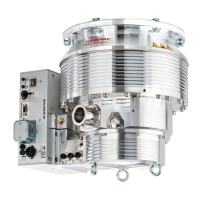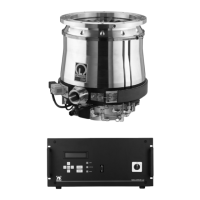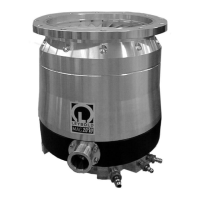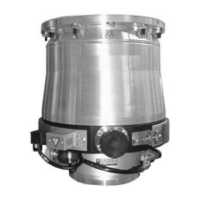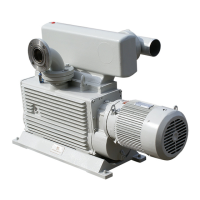Operation
40 300324726_002_C0 - 10/2016 - © Leybold
4.5 Switching off
Switch off the pump
■
by pressing the STOP button (in the LOCAL mode)
■
via the interface, e.g. Profibus
Do not stop the Mag with the mains. Switching off the mains while the
pump is running will wear out the touch down bear ings.
After switching off, the green status LED will flash until the rotor of the turbo-
molecular pump is at standstill. This may take several minutes. The decelera-
tion time of the pump corresponds approximately to the run-up time of the
pump. The rotor may be stopped faster by venting the pump. The pump
must only be handled with the rotor not rotating.
With the DC power supply off, the turbomolecular pump will act as a genera-
tor supplying the frequency converter with energy as indicated by the yellow
power LED.
At speeds approximately below 100 Hz there will not be enough power any
more for the LEDs, i.e. the pump may still turn with out any of the LEDs
being on.
Switch off the forevacuum pump.
When using oil-sealed forevacuum pumps, vent the turbomolecular pump
before it comes to a stop; refer to Section 4.6.
When using TRIVAC pumps the built-in anti-suckback valve will close auto-
matically, shutting off the forevacuum line. In forevacuum pumps without a
vacuum retention valve, close the valve in the forevacuum line.
When the system is not operating, ensure that neither ambient air nor
cleaning media can enter the pump.
If a failure occurs the turbomolecular pump will be shut down automatically.
The red LED at the frequency converter lights up.
After a mains power failure the pump can run up automatically once more.
This is intended to keep the vacuum during short mains failures. The oper-
ator must ensure safety by suitable measures.
Unplug any connectors only when the mains voltage is switched off and
the pump does no longer turn (the green LED is off).
Emergency shut down
In the case of an emergency shut down, the pump is switched off as
de scribed above. The rotor of the turbomolecular pump may be stopped
faster by controlled venting the pump, see Fig. 4.1.
NOTICE
CAUTION
Venting
CAUTION
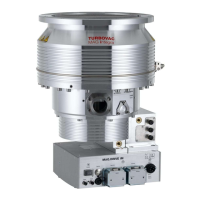
